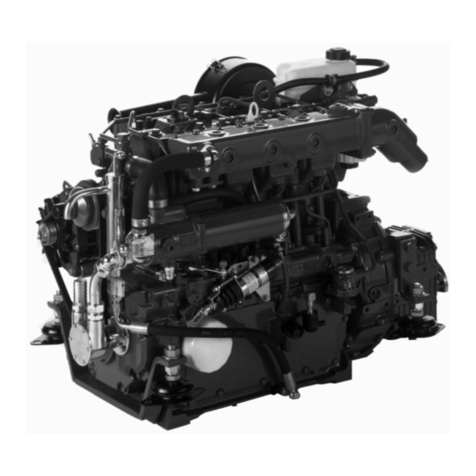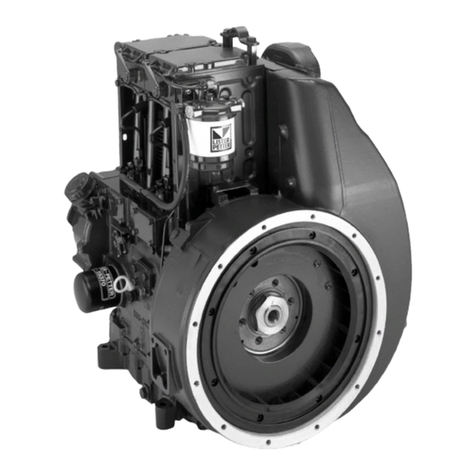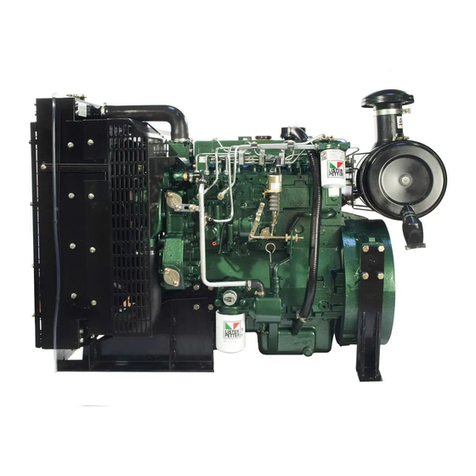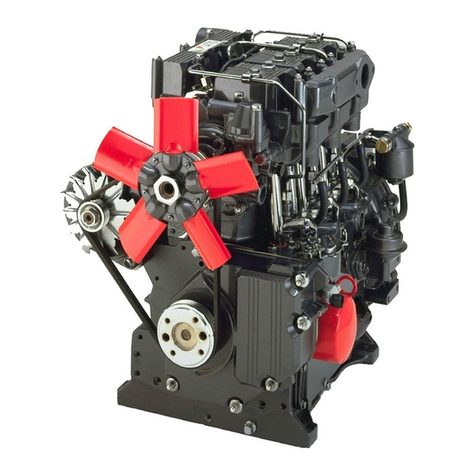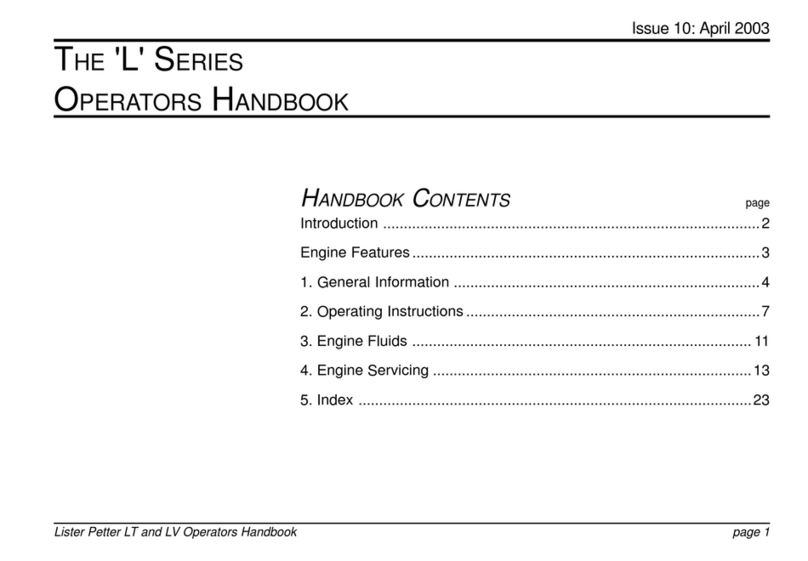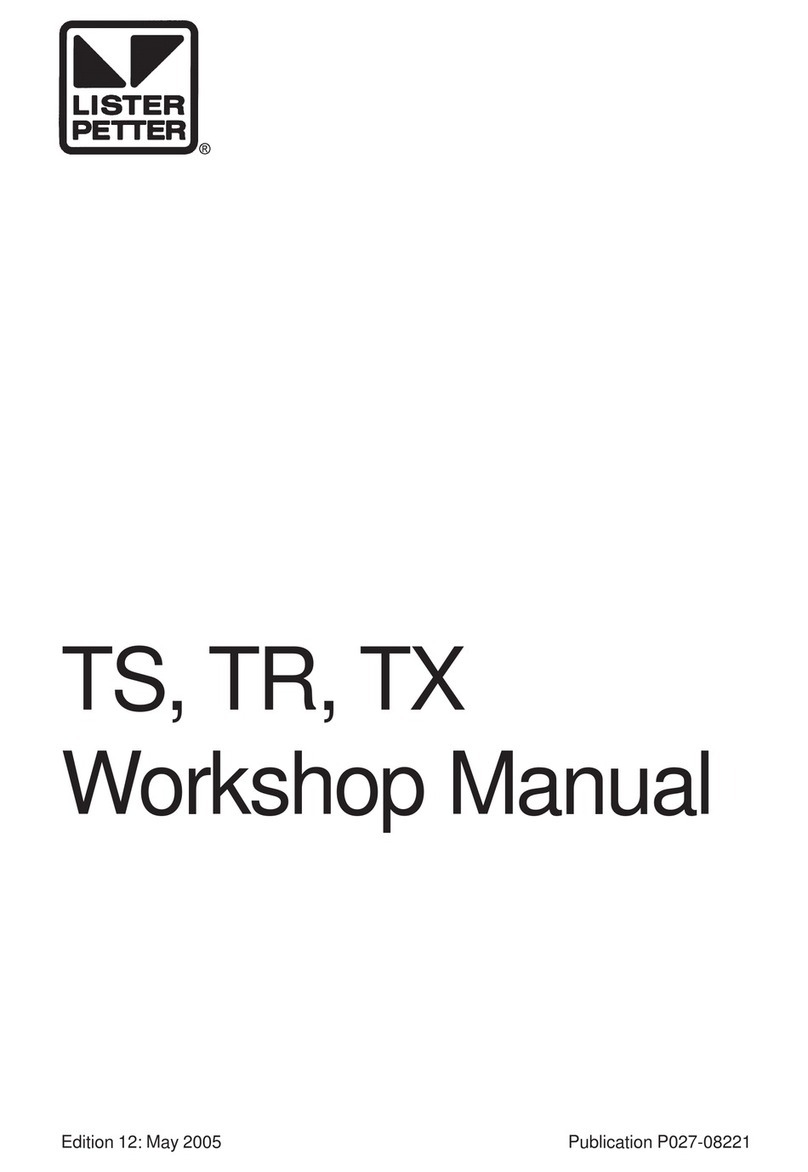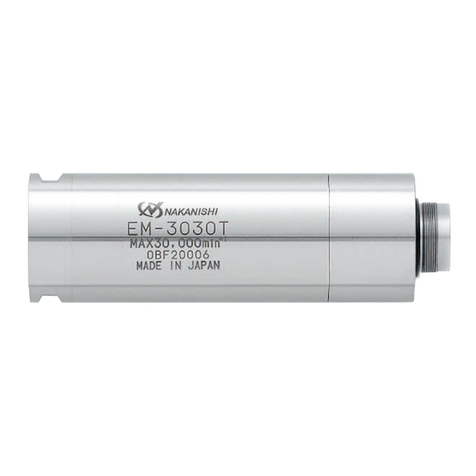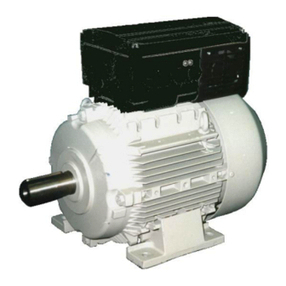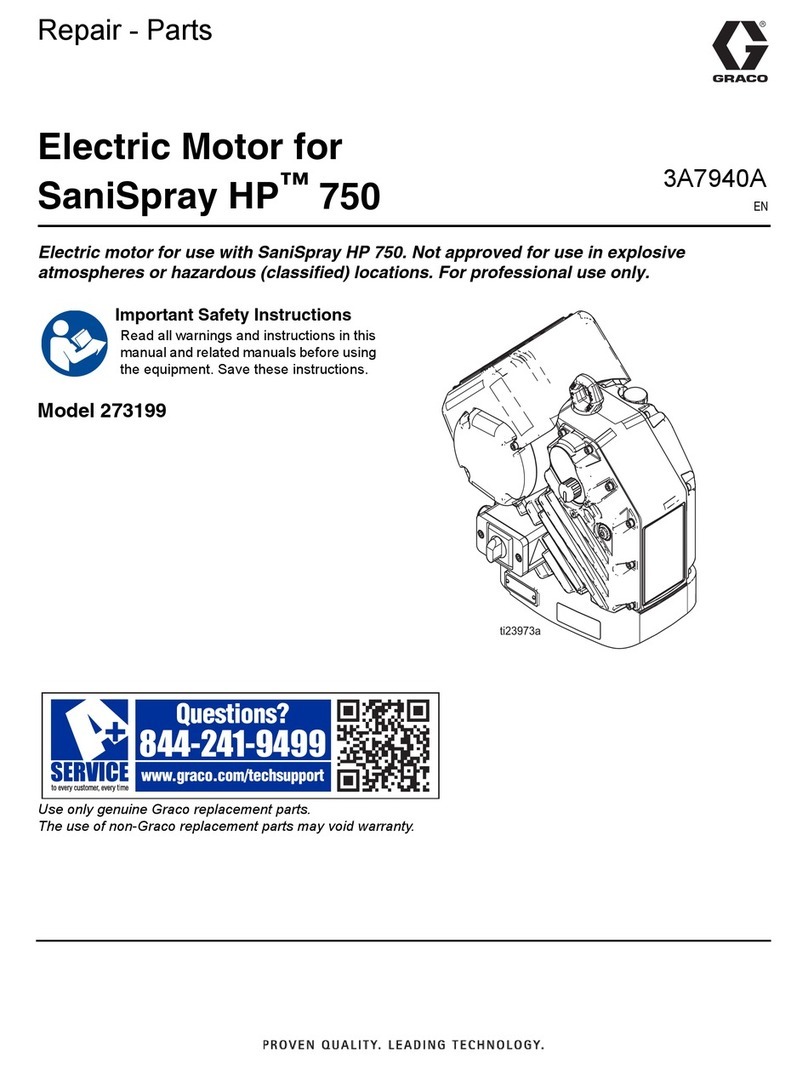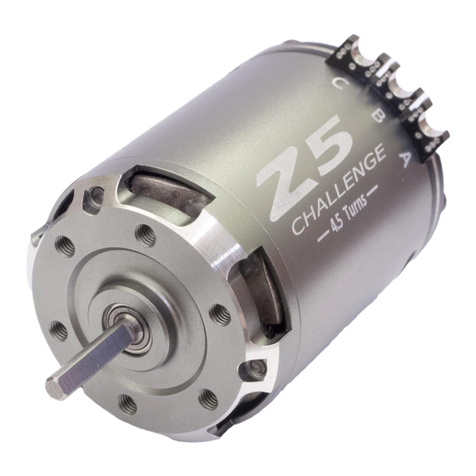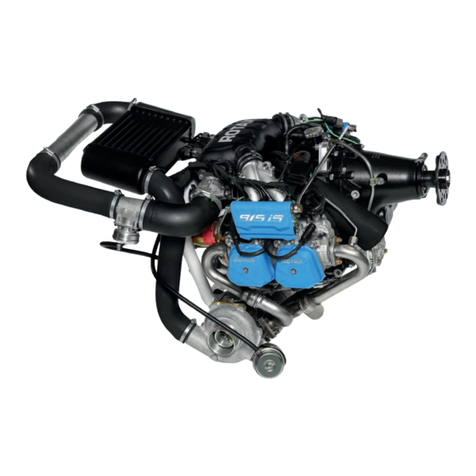5
LPW / LPWS / LPWX ENGINE OPERATORS' HANDBOOK
INTRODUCTION
This handbook explains the operation
and routine maintenance of Lister Petter
water cooled diesel engines in the Alpha
(LPW, LPWX) and New Alpha (LPWS)
series.
Please note that If your engine is part
of a generating set, there is a separate
operators' handbook for the genset,
to explain such features as the control
module.
ENGINE IDENTIFICATION
To identify which model of Lister Petter
LPWX/LPW(S) diesel engine you are
using refer to the engine serial number,
which is stamped on a plate attached to
the engine. It identifi es the type and build
of the engine (see table below) to enable
the correct maintenance procedures to
be carried out. Here is a sample serial
number:
06 001234 LPWS3 A 402
06........................Year code (06 = 2006)
001234...............Unique engine number
LPWS3 ............................ Engine model
A .........................Anti clockwise rotation
402....................................Build number
The illustrations on page 4 show features
of the different engine models. When
following the instructions in this handbook
you will need to be familiar with the parts
labelled.
USING THIS HANDBOOK
Operating or servicing a diesel engine
is potentially dangerous. You must not
attempt it unless you have the necessary
knowledge and experience.
Read each section thoroughly and
carefully, taking note of all the information
and instructions given. This is for
your safety and to ensure the correct
maintenance of your engine. For specifi c
aspects of operation and maintenance,
use the table of contents (page 3) or the
index (page 40) to fi nd the section you
need. Where instructions are numbered
in sequence, they must be followed in
LPW DIESEL ENGINE MODELS
Model Characteristic features
LPW2 Two cylinders, water cooled, naturally aspirated, direct injection
LPW3 Three cylinders, water cooled, naturally aspirated, direct injection
LPW4 Four cylinders, water cooled, naturally aspirated, direct injection
LPWT4 Four cylinders, water cooled, direct injection, turbocharged
LPWX2 Two cylinders, water cooled, naturally aspirated, direct injection
LPWX3 Three cylinders, water cooled, naturally aspirated, direct injection
LPWX4 Four cylinders, water cooled, naturally aspirated, direct injection
LPWS2 Two cylinders, water cooled, naturally aspirated, indirect injection, emission compliant
LPWS3 Three cylinders, water cooled, naturally aspirated, indirect injection, emission compliant
LPWS4 Four cylinders, water cooled, naturally aspirated, indirect injection, emission compliant
LPWST4 Fourcylinders,watercooled,naturallyaspirated,indirectinjection,turbocharged,emissioncompliant
